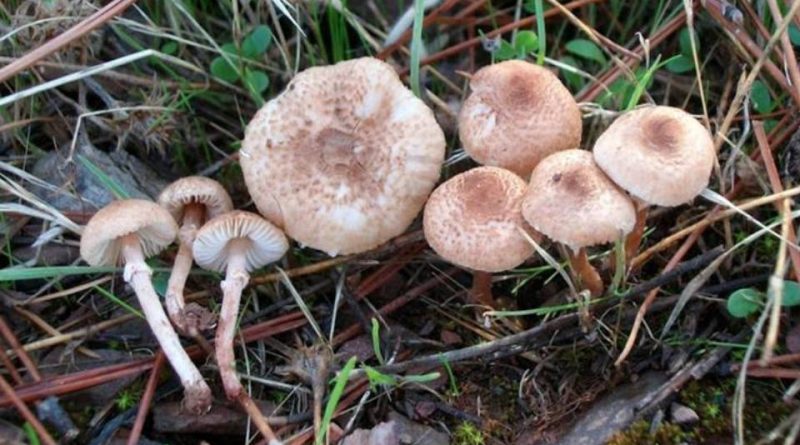Lepiota helveola
Lepiota helveola
The Evil Bubboline (Lepiota helveola Bres.) is a saprophytic fungus, poisonous deadly, of the family of the Agaricaceae.
Systematics –
From the systematic point of view it belongs to the Eukaryota Domain, Fungi Kingdom, Basidiomycota Division, Agaricomycetes Class, Agaricales Order, Agaricaceae Family and therefore to the Lepiota Genus and to the L. helveola Species.
Etymology –
The term Lepiota comes from the Greek λεπίϛ λεπίδοϛ lepís lepídos squama and from οὖς, ωτόϛ oús, otós ear (hat): mushroom with scaly cap. The specific epithet helveola is the diminutive of yellowish hélvus: yellowish, blondish.
Geographical Distribution and Habitat –
The Evil Bubboline is a saprophytic fungus that grows on the edge of the woods, or in gardens and vegetable gardens. The fruiting period is that of late autumn.
Recognition –
The Lepiota helveola can be recognized for its fairly robust size, with a 2 to 4 cm cap, pink-flesh-colored, with darker brown-red, concentric, on whitish scales; this is first convex-bell-shaped and then more or less flat, with a darker obtuse umbo and fluffy margin.
The present abundance of a partial white or whitish veil is noted in the young specimens.
It is also possible to notice a slight wine-red color change at the touch in all parts of the carpophore, which is more significant in the lamellae and in the flesh.
The slats are white, dense and free.
The stem measures 2-5 x 2-3 cm, cylindrical, fibrillose and fistulous, concolorous to the cap.
The ring is whitish, inferior and fleeting.
The meat is white or slightly reddish, odorless and with a slightly sour taste.
At the microscope we can see elliptic spores, 8-10 x 5.6 micron, whitish in mass.
Cultivation –
Lepiota helveola, due to its venomous nature, is not a cultivated mushroom.
Uses and Traditions –
The Evil Bubboline, like many other small Lepiote, must be carefully examined, to avoid its collection, as it can cause serious poisonings due to the presence of Helvellic acid, a dibasic acid contained in some species of mushrooms, which for a long time it was considered the main agent of intoxications of a haemolytic nature.
Like several other species of the genus Lepiota, it contains amatoxins that can cause potentially fatal liver injury. Amatoxins or Amanitines are a group of toxins also found in Amanita phalloides and in some species of Lepiota and Galerina.
Amatoxins are resistant to high temperatures, drying, and attack of gastric juices; these are responsible for the parafalloid syndrome in mushroom intoxication with results that are most often lethal.
The parafalloid syndrome appears following the ingestion of the fungus after an incubation period of 5-15 days with the first symptoms that are characterized by strong gastrointestinal disorders, muscle cramps and sweating. The liver and kidneys are also compromised. The outcome is generally favorable and deaths are rare.
For this reason the Lepiota helveola should not be collected at all.
Preparation Mode –
This mushroom, being of poisonous and deadly edibility, should never be harvested or consumed in any way.
Guido Bissanti
Sources
– Wikipedia, the free encyclopedia.
– Cetto B., 2008. The mushrooms from life, Saturnia, Trento.
– Pignatti S., 1982. Flora of Italy, Edagricole, Bologna.
– Conti F., Abbate G., Alessandrini A., Blasi C. (edited by), 2005. An annotated checklist of the Italian vascular flora, Palombi Editore.
Attention: Pharmaceutical applications and food uses are indicated for informational purposes only, do not in any way represent a medical prescription; therefore no responsibility is assumed for their use for curative, aesthetic or food purposes.


